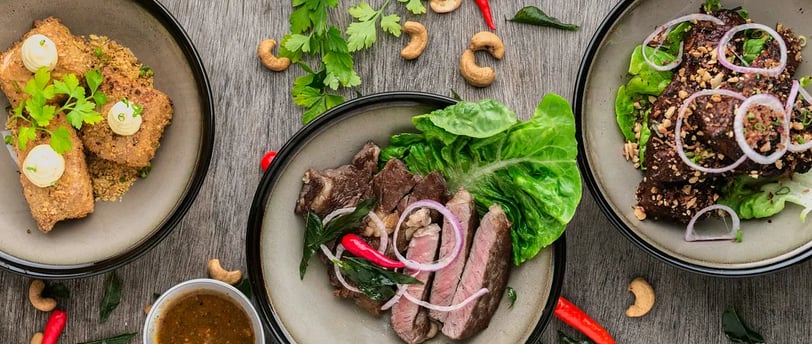How to Start the Ketogenic Diet Correctly (Without Losing Your Mind!)
4/12/20256 min read


Understanding the Ketogenic Diet
The ketogenic diet, often referred to as the keto diet, is a high-fat, low-carbohydrate eating plan that aims to transform how the body generates energy. The fundamental principle of this diet revolves around the significant reduction of carbohydrate intake, typically to about 5-10% of daily caloric consumption, while increasing fat intake to approximately 70-80%. This shift in macronutrient composition encourages the body to enter a metabolic state known as ketosis, where fat becomes the primary fuel source instead of carbohydrates.
When carbohydrate intake is drastically lowered, the body depletes its glycogen stores, which are the primary source of energy for most individuals. In this state of depleted glycogen, the liver begins to produce ketones from fatty acids, which are then utilized by cells for energy. This process not only aids in weight loss but may also offer various health benefits, including improved blood sugar control, reduced hunger, and enhanced mental clarity.
Many people opt for a ketogenic diet citing reasons such as weight management, improved athletic performance, and the potential therapeutic effects for certain medical conditions like epilepsy. However, there exists a plethora of misconceptions surrounding the diet, such as the belief that consuming high amounts of fat will inherently lead to heart disease. Research suggests that, when followed correctly, a ketogenic diet may help optimize lipid profiles and promote heart health in individuals, contradicting these long-held fears.
Furthermore, the ketogenic diet is not a one-size-fits-all approach and may require careful planning and monitoring to avoid nutrient deficiencies. It is important for individuals to incorporate a variety of low-carbohydrate vegetables and consider potential long-term sustainability when adopting such a significant dietary change.
Preparing for the Transition to Ketosis
Embarking on a ketogenic diet is a significant lifestyle change, and proper preparation is crucial for a successful transition to ketosis. This involves a series of thoughtful steps that not only focus on dietary changes but also account for psychological readiness. A well-structured meal plan is essential. Begin by researching and selecting keto-friendly recipes that incorporate low-carb ingredients, healthy fats, and moderate protein. This will provide a framework that simplifies the cooking process and minimizes decision fatigue.
When it comes to grocery shopping, prioritize purchasing whole, unprocessed foods to align with the ketogenic diet principles. Essential keto-friendly staples include avocados, olive oil, leafy greens, nuts, seeds, and high-quality proteins such as fish and grass-fed meat. It is advisable to venture out with a comprehensive shopping list based on your meal plan to avoid impulse purchases that might disrupt your ketogenic journey.
Furthermore, understanding the psychological and physical changes that accompany the transition period is vital. The initial stage may feature symptoms commonly known as the "keto flu," which can include fatigue, headaches, and irritability. Familiarize yourself with these sensations to temper any unexpected discomfort. Consider gradual changes, such as reducing carbohydrate intake progressively, to ease the body into ketosis rather than abruptly cutting carbs entirely.
In addition, staying hydrated and incorporating electrolytes can mitigate some of the unpleasant experiences associated with the transition. Engage in practices that support mental clarity and emotional stability, such as mindfulness exercises, which can provide comfort during this transformative period. Preparing in advance can significantly reduce stress and liberate you from confusion as you adapt to a ketogenic diet.
Building a Sustainable Keto Meal Plan
Creating a sustainable ketogenic meal plan is essential for those embarking on this dietary journey. The keto diet primarily revolves around high-fat, moderate-protein, and very low-carb food intake. To start, it is crucial to choose keto-approved foods that fit this macronutrient distribution. Foods such as avocados, nuts, seeds, fish, eggs, and non-starchy vegetables should be staples in your grocery list, while sugars and grains should be avoided. This foundational knowledge forms the basis of a successful ketogenic plan.
Meal prep plays a pivotal role in achieving adherence to the ketogenic diet. Preparing meals in advance can save time and reduce the temptation to stray from keto guidelines. Individuals can batch cook protein sources, like grilled chicken or baked salmon, and pair them with a variety of roasted or steamed vegetables. Additionally, consider incorporating keto-friendly fats such as olive oil, butter, or coconut oil to enhance flavors and meet fat requirements. Utilizing these ingredients not only maintains variety but also keeps meals enjoyable.
Including simple recipes in your meal planning can greatly enhance your experience on the keto diet. For instance, a breakfast option like scrambled eggs cooked in butter with spinach and feta can kickstart your day. For lunch, a salad topped with grilled chicken, avocado, and a drizzle of olive oil serves as a satisfying meal. Dinner could feature zoodles (zucchini noodles) paired with a creamy alfredo sauce and shrimp, delivering both flavor and satisfaction.
Moreover, it is important to regularly rotate your meals and experiment with new recipes to avoid culinary monotony. By introducing different spices, herbs, and seasonings, you can create enticing dishes that align with keto principles while keeping boredom at bay. In conclusion, building a balanced and varied ketogenic meal plan not only promotes adherence but also enhances the overall enjoyment of the journey towards improved health.
Navigating Social Situations and Overcoming Challenges
Adopting a ketogenic diet presents various challenges, particularly in social settings where traditional foods may dominate the menu. Successfully navigating these situations requires both preparation and effective communication. When attending social gatherings, consider reviewing the menu in advance if available. This allows for planning ahead and identifying keto-friendly options that align with your dietary goals. If the menu offers limited choices, do not hesitate to reach out to the host to discuss potential modifications, or volunteer to bring a dish that fits within your ketogenic framework. Sharing your dietary preferences with friends and family fosters understanding and support, making it easier for them to accommodate your needs.
Dining out can also present hurdles for those following a ketogenic diet. When visiting restaurants, opt for dishes that primarily feature proteins and non-starchy vegetables, while avoiding bread, pasta, and high-carb sauces. Many establishments are willing to modify meals, so feel free to ask for substitutions. Additionally, utilizing restaurant apps can help in searching for establishments that cater to keto-friendly diets, providing you with more confidence in social dining scenarios.
In moments of temptation or cravings, it is crucial to practice self-compassion. Allow yourself to acknowledge cravings without judgment. Implementing strategies to manage these feelings can help maintain focus on your long-term goals. For example, keep healthy ketogenic snacks on hand, hydrate regularly, and engage in activities that distract from food temptations. Remember that occasional slip-ups may occur and that they should not define your dietary journey. Adopting a flexible mindset while celebrating small victories reinforces your commitment to the ketogenic lifestyle. This approach encourages balance, making it easier to enjoy social situations without feeling overwhelmed or derailed from your dietary objectives.
Crissy’s Keto Transformation: From Struggling to Thriving
I want to share a great story of one of my clients. Crissy, a 52-year-old working mother, came to my small group personal training sessions wanting to lose weight and boost her energy levels. She had tried several diets but always ended up gaining the weight back and struggled to find a routine that fit her busy life.
After discussing her goals and lifestyle, I introduced her to a balanced keto approach, paired with strength training and metabolic workouts from my program. Instead of focusing on extreme carb-cutting, I guided Crissy toward healthy fats, moderate protein, and strategic carb cycling around her workouts.
The Results:
✅ Dropped 25 lbs in 10 weeks — without feeling deprived or restricted
✅ Increased strength & endurance — going from struggling with basic exercises to feeling strong and confident lifting weights
✅ More energy & focus — no more afternoon slumps, feeling energized all day
✅ Improved relationship with food — no longer feeling the urge to binge on carbs
Crissy’s biggest win? She stayed consistent and enjoyed the journey. Keto became a lifestyle that not only aligned with her fitness goals but also helped her thrive in her everyday life.


Bonus Tip: Get a Custom Keto Meal Plan
If you want to skip the guesswork and follow a plan that’s tailored to your body and goals, I highly recommend checking out this custom keto meal plan. It takes the stress out of meal planning and makes keto super simple.
Starting keto the right way can be the difference between success and frustration. Follow these steps, stay committed, and before you know it, you’ll be experiencing all the amazing benefits keto has to offer.
Now, go crush it!